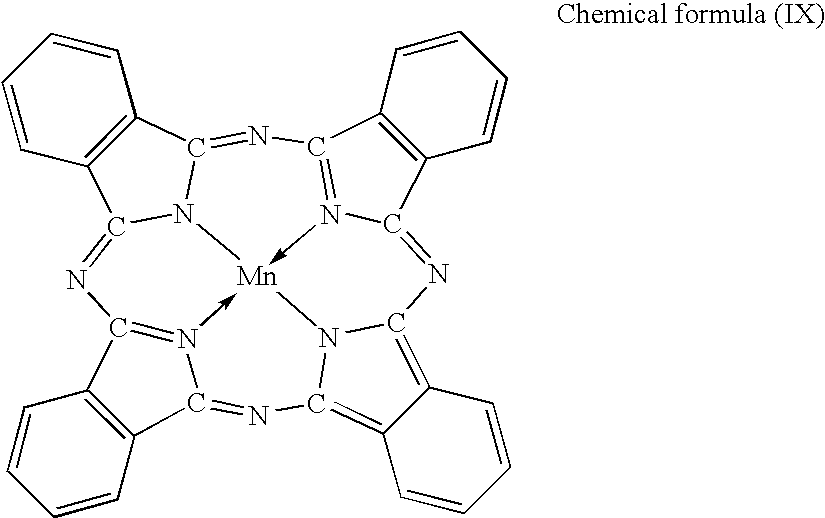Lithium Secondary Battery
a secondary battery and lithium technology, applied in secondary cells, non-aqueous electrolyte cells, cell components, etc., can solve the problems of inability to completely remove water, inability to use aqueous electrolyte solution as an aqueous electrolyte solution like conventional secondary batteries, and inability to remove water completely, so as to improve cycle characteristics, prevent metallic materials from being corroded, and suppress corrosion
- Summary
- Abstract
- Description
- Claims
- Application Information
AI Technical Summary
Benefits of technology
Problems solved by technology
Method used
Image
Examples
example 5
[0165] A battery of the Example 5 was produced in such a manner that a coin-cell type electrode body was produced in the same manner as in Example 1 and put in a battery case, which was then filled with nonaqueous electrolyte solution.
[0166] In this case, there was used, as the nonaqueous electrolyte solution, a solution prepared by adding 500 ppm of water content (H.sub.2O), which becomes a cause of deterioration in battery properties, and each mass % of 1, 2, 3-benzotriazole, which is the compound, as shown in FIG. 5 to a mixed solvent of EC and DEC of an equivolume. The other methods for production were the same as in Example 1. In addition, a cycle test was performed in the same manner as in Example 1.
5 TABLE 5 Concentration of additive in Capacity-retention rate of electrolyte solution (mass %) battery after 100 cycles (%) 0.01 60.2 0.02 65.3 0.05 78.2 0.10 88.1 0.30 93.0 0.50 92.8 1.00 76.5 5.00 67.7
[0167] (Evaluation)
[0168] In Example 5, change in capacity-retention rate of a...
example 6
[0169] A battery of Example 6 was prepared in such a manner that: a positive electrode slurry was produced by adding, as a conducting aid, 4 mass % acetylene blacK to 100 mass % of LiMn.sub.2O.sub.4 spinel as positive active material and further adding a solvent and a binder; the positive electrode slurry was applied on both surfaces of an aluminum foil having a thickness of 20 .mu.m so as to have a thickness of about 100 .mu.m on each surface to obtain a positive electrode 2; a carbon powder as negative active material was applied on both surfaces of a copper foil having a thickness of 10 .mu.m so as to have a thickness of about 80 .mu.m on each surface to obtain a negative electrode 3; using the positive electrode 2 and the negative electrode 3, a wound type of electrode body was produced and put in a battery case, which was then filled with nonaqueous electrolyte solution. Here, as the nonaqueous electrolyte solution, there was used a solution prepared in such a manner that LiPF....
PUM
| Property | Measurement | Unit |
|---|---|---|
| temperature | aaaaa | aaaaa |
| diameter | aaaaa | aaaaa |
| voltage | aaaaa | aaaaa |
Abstract
Description
Claims
Application Information
 Login to View More
Login to View More - R&D
- Intellectual Property
- Life Sciences
- Materials
- Tech Scout
- Unparalleled Data Quality
- Higher Quality Content
- 60% Fewer Hallucinations
Browse by: Latest US Patents, China's latest patents, Technical Efficacy Thesaurus, Application Domain, Technology Topic, Popular Technical Reports.
© 2025 PatSnap. All rights reserved.Legal|Privacy policy|Modern Slavery Act Transparency Statement|Sitemap|About US| Contact US: help@patsnap.com



